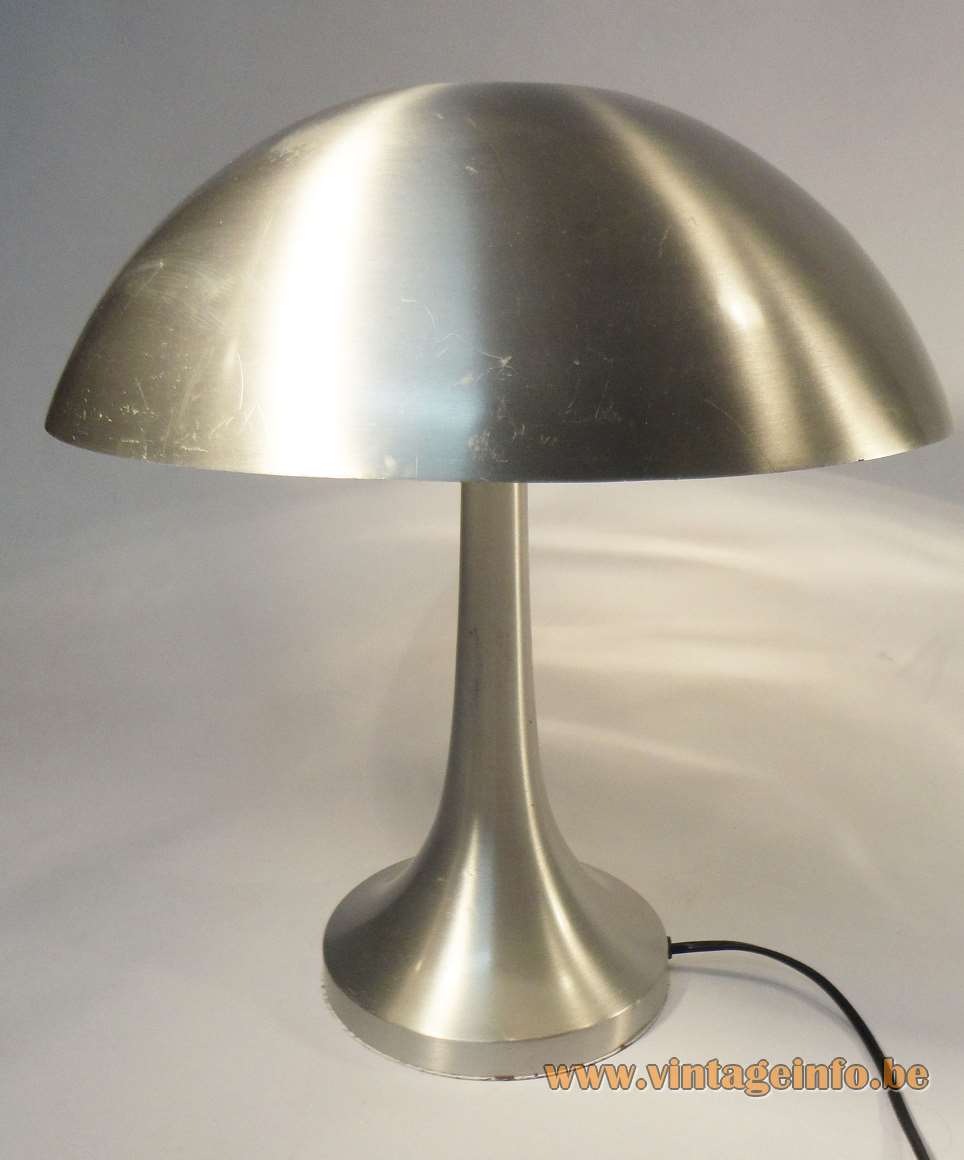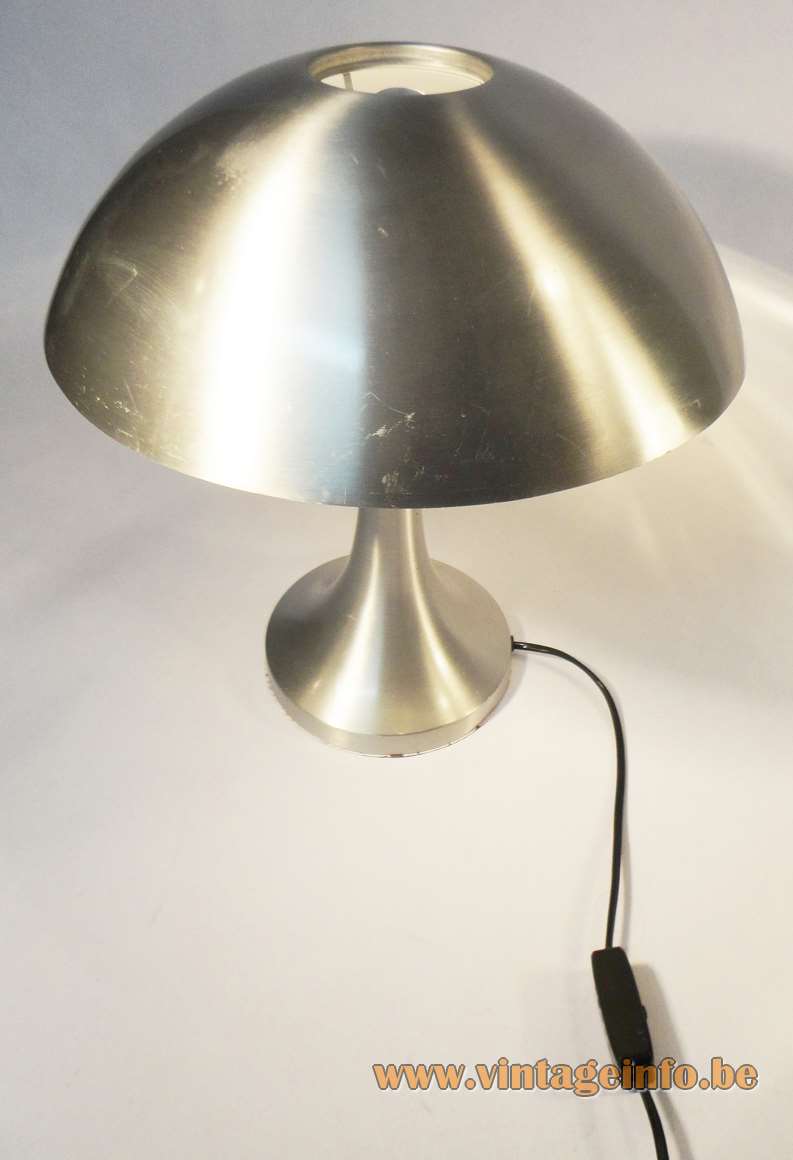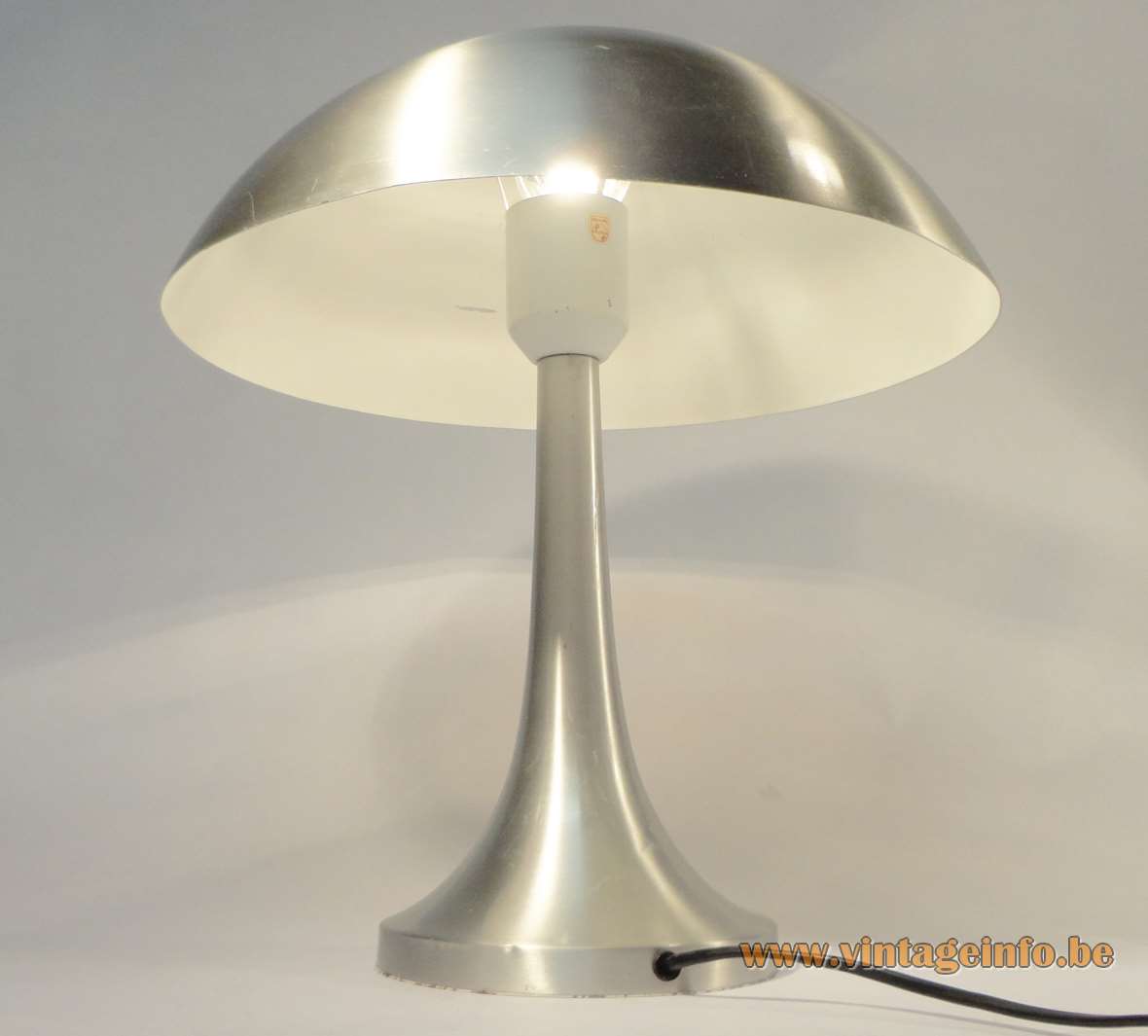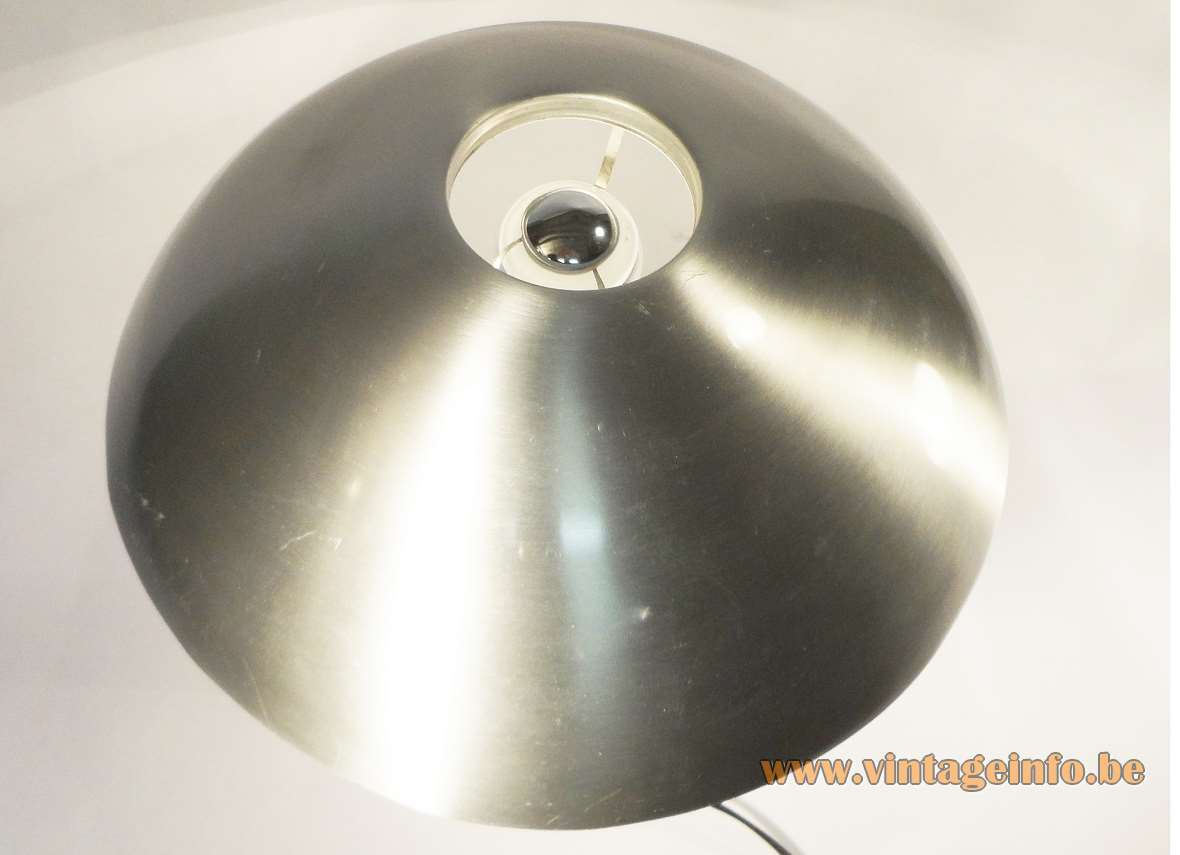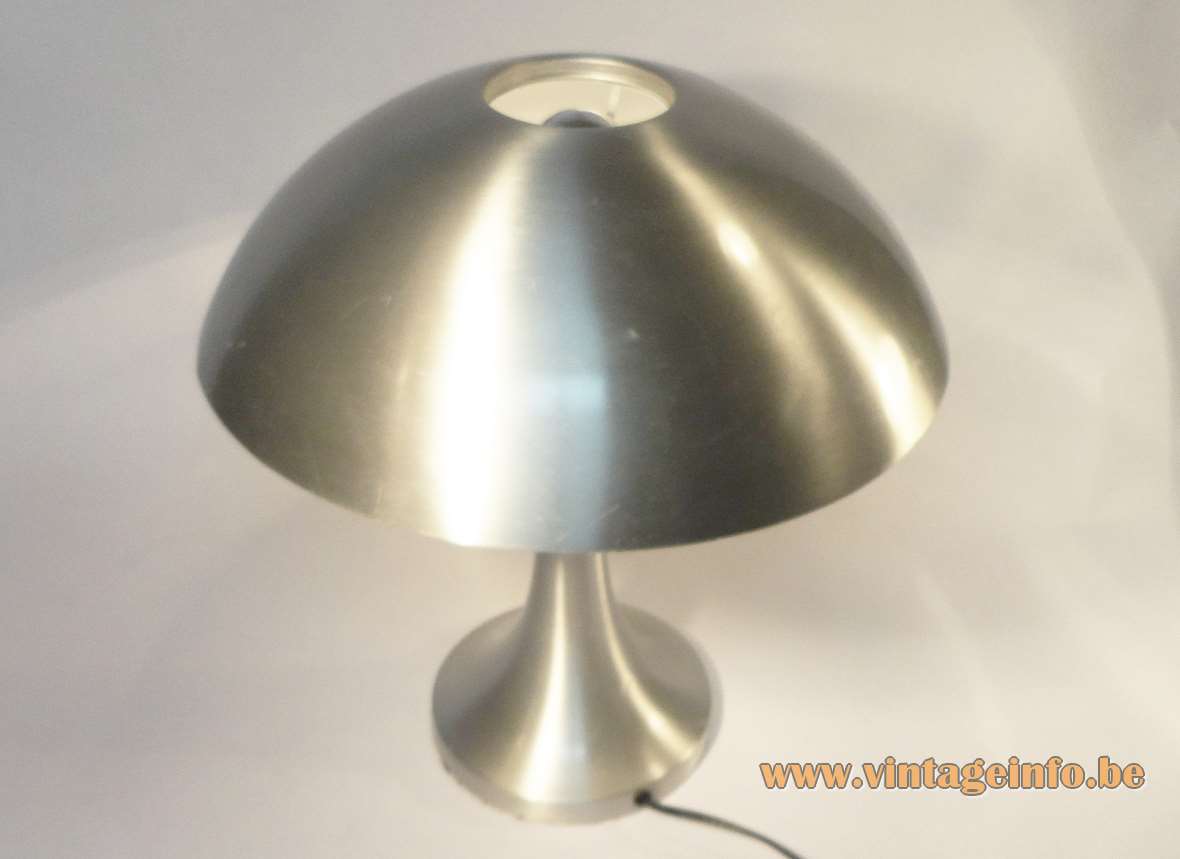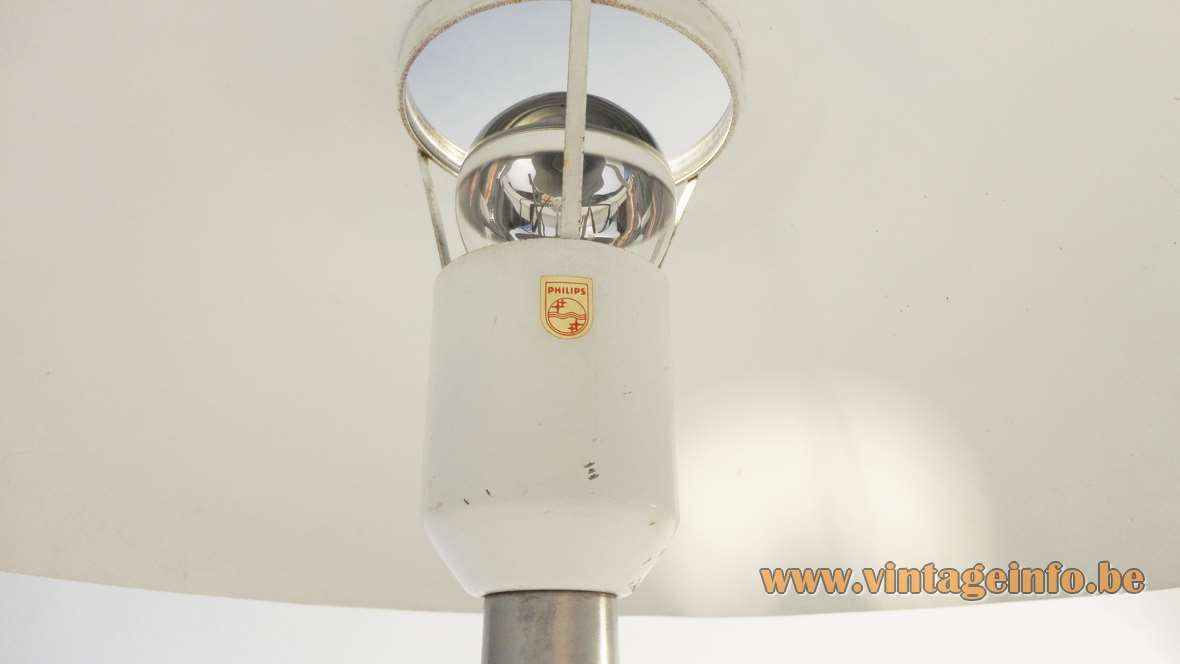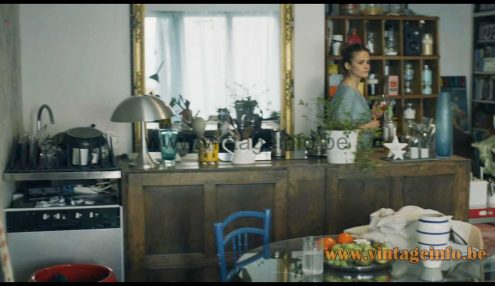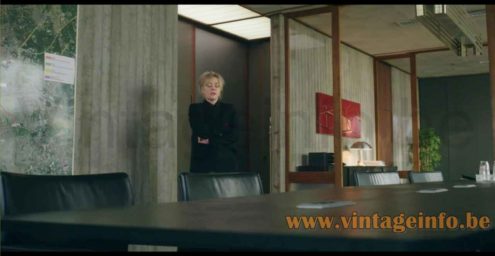Lamps in the movies
A 1960s Louis Kalff desk lamp Tremelo was used as a prop in the 2017 Belgian television crime series Unité 42 (Unit 42). Starring Patrick Ridremont, Constance Gay and Tom Audenaert. Many other lamps appear in the series.
A 1960s Louis Kalff desk lamp Tremelo was used as a prop in the 2021 Irish crime drama tv series Hidden Assets, season 1, episode 1. The lamp appears in several scenes. Starring Angeline Ball, Simone Kirby and Wouter Hendrickx.
1960s Louis Kalff Desk Lamp Tremelo
Materials: Brushed aluminium conical round base. White painted tube on top. Brushed aluminium mushroom lampshade with a hole in the middle. Painted white on the inside. Some metal parts. Bakelite E27 socket.
Height: 41 cm / 16.14”
Lampshade: ∅ 37 cm / 15.47”
Base: ∅ 17 cm / 14.56”
Electricity: 1 bulb E27, 1 x 75 watt maximum, 110/220 volt.
Any type of lamp can be used. But preferably a silver tipped light bulb.
Period: 1960s – Mid-Century Modern.
Designer: Louis Christiaan Kalff (attributed).
Manufacturer: Philips, Eindhoven, The Netherlands.
Other versions: This 1960s Louis Kalff desk lamp was only made in this version. In Belgium it is named Tremelo, the name of a village.
In all probability this lamp was designed by the internal design-team of Philips. It is possible that it was designed or approved by mister Kalff, since he has an advisory function for the company after his retirement. Louis Kalff started to work for Philips in 1925.
Koninklijke Philips N.V.
Inspired by the fast-growing electricity industry and the promising results of Gerard Philips own experiments to make reliable carbon filaments, Frederik Philips (his father) financed the purchase of a modest factory in Eindhoven, The Netherlands in 1891. Frederik Philips was a Jewish banker based in Zaltbommel.
In 1895, after difficult first four years and near bankruptcy, Anton Philips joined the company. He was Gerard’s younger brother. With Anton’s arrival, the family business began to expand rapidly. The brothers changed their family business by founding the Philips corporation. They laid the foundations for the later electronics multinational.
In 1930 the first shaver of the Philips company was introduced and was simply called “The Philishave”.
A day before the German invasion in the Netherlands on 9 Mai 1940, the Philips family fled to the United States of America, taking a large amount of the company capital with them. Operating from the US as the North American Philips Company, they managed to run the company throughout the war. After World War II the company was moved back to the Netherlands, with their headquarters in Eindhoven.
Louis Christiaan Kalff (Amsterdam, November 14th 1897 – Waalre, September 16th, 1976)
Louis Kalff was a pioneering industrial designer in the Netherlands during the first half of the 20th century. With a solid background including studies in sculpture, ceramics, furniture design and architecture, he began to work for the Philips company in 1924, department consumer electronics company marketing.
In 1929 he started a department for design of lighting products (LIBU – Lichtadviesbureau (Dutch for light consultancy). Louis Kalff was responsible for the lighting sections of the World Exhibitions in Barcelona, Antwerp and Paris.
As freelancer he also designed posters and advertising for the Holland America Line, Calvé, Zeebad Scheveningen, Holland Radio and others. Louis Kalff also designed book covers.
After World War II Kalff kept himself active in industrial design for Philips. After his retirement in 1960, Louis Kalff stayed with Philips as a consultant and architect. In 1961 he was given the direction and execution of the Evoluon building in Eindhoven. It was the last work of the light architect who almost worked for forty years at the Philips group.
Links (external links open in a new window)
The complete history of the company on the Philips website
The Evoluon building – Wikipedia
Website of the Philips Museum in Eindhoven
Louis Kalff – Wikipedia (only in Dutch)
Unit 42 (2017) TV series – Wikipedia
Unit 42 (2017) TV series – IMDb
